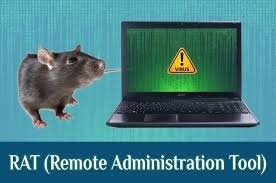In 2017, various types of cybersecurity attacks occurred. Remote Administration Tool (RAT) attacks have seen exponential growth in recent years, according to research presented at Microsoft Azure partner Biocatch webinar
One of the main reasons for the increase in RAT attacks is due to the difficulty of detecting them using traditional means, especially in the financial sector. RAT attacks use the system-level remote access tools commonly used by system administrators or help desk personnel to provide technical assistance. Consequently, because the RAT attack originates from the client device and uses non-Trojan system-level software, such attacks bypass traditional anti-malware techniques.
The only cybersecurity tool that consistently demonstrated the ability to thwart such attacks was behavioral biometrics. For example, in an international bank transfer attempt in 2016, a fraudster gained access to a customer's machine through a RAT attack. Ultimately, however, behavioral biometrics flagged the transfer attempt as fraudulent based on the anomalous way the fraudster interacted with the user's device via RAT.
In the companion infographic, the green dots on the right side of the first image show that the legitimate user was primarily using the scroll bars on the right side of the screen, while in the second image the red dots show that the fraudster preferred to use the mouse scroll wheel to perform the same tasks. Biometric analysis also showed that the fraudster used the Caps Lock key instead of the Shift key, as the legitimate user did.
In addition to RAT attacks, voice phishing (vishing), account takeovers (ATOs), chargeback attacks, and mobile banking fraud are just some of the methods that also saw an increase in 2016.
Remote desktop administration tools
The functionality of remote administration is what is considered as programs that allow certain types of actions to be carried out from a local computer.
The functionality of remote administration is what is considered as programs that allow certain types of actions to be carried out from a local computer and that they be executed on another remote computer.
Today, due to the technological development and deployment of equipment that may be thousands of kilometers away or in a place where physical access is restricted or inappropriate, there is a need to connect remotely to them to perform various support, administration or simply work, a situation that would not be possible if there were no remote administration tools.
For example, with a remote administration tool or application, a computer network manager can access another computer to see if it has problems, without having to leave their desk.
Today we will share with you some alternative applications for remote administration and what they are focused on.
Remote assistance has the advantage of providing immediate help without waiting for a technician to be physically at the site of the problem, although if the connection is lost, this assistance ends.
Chrome-remote:
Chrome Remote Desktop allows you to remotely access one computer from another over the Internet. For example, you can use the app to securely access your files and apps from another computer. A feature of the Chrome browser is that if it is installed on the remote computer and on ours, it will allow us to control the desktop of any PC regardless of its operating system. Due to its simplicity of use and its easy installation, nothing intrusive (it's just another browser plugin), it's a perfect option to get us out of trouble quickly.
TeamViewer:
TeamViewer is a program whose function is to connect to a remote desktop in a secure, efficient and fast way using a random "ID" and password (there are exceptions in the event that the user does not want random passwords), which changes when closing the session for the security of the user who has been helped by remote control or other purposes. Teamviewer works for operating systems: Windows, MacOS X, Linux and also for other devices like iPhone.
Splashtop:
It is a very interesting tool for those users who want to experience a new way of managing their equipment.
Splashtop is an application with which we can access all the information, being able to do practically everything we could do on a computer, tablet or mobile phone.
The application, among many other things, will allow us to access our usual Internet browser, with support for Java and Flash included. In other words, we can see any web page that we could normally access from our computer.
ScreenView:
ScreenView is a tool specially designed to work in a group on a computer or perform technical service work.
For its operation you must be connected to the Internet and run the application on both computers.
It is an application developed in Java that does not require installation and that you can carry on your USB device. The tool allows you to remotely connect to another computer and view your desktop on another computer simultaneously using network connection.
NCV:
It stands for Virtual Network Computing.
VNC is a free software program based on a client-server structure. Also called remote desktop software. VNC does not impose restrictions on the operating system of the server computer with respect to that of the client: it is possible to share the screen of a machine with any operating system that supports VNC by connecting from another computer or device that has a ported VNC client.
The tools that we present to you are remote access options, among many others. The recommendation is always to look for the one that best suits your needs and/or tastes.
Solving problems, sharing information, keeping your team optimized, is a necessity and also a reality.


No comments yet